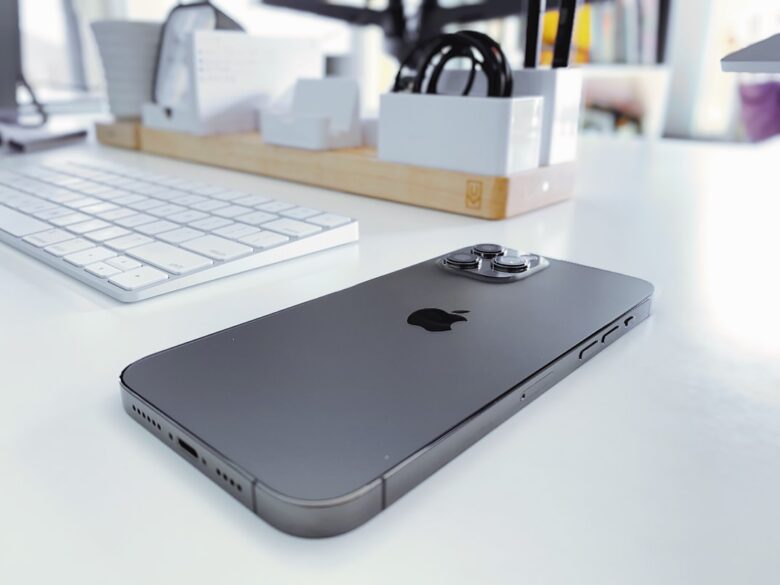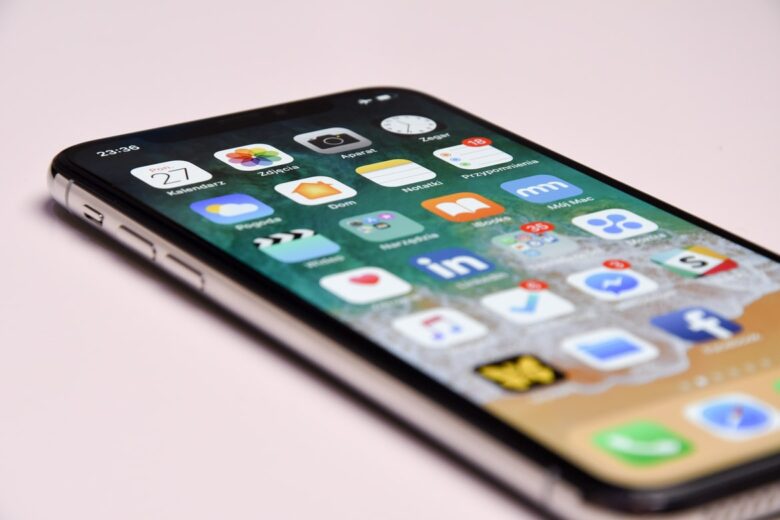If you are reading this article, chances are you’re an iPhone user, and you want to enjoy your user experience even more. Regardless of whether your phone is the latest and greatest, or if it is the iPhone 6—don’t worry because you will still find this post very useful!
Today we’ll be talking about ways that you can fully maximize your user experience by following tips that even long-time iPhone users still don’t know about. These will aim to optimize your phone’s storage, battery life, and privacy. Now sit tight and browse through CellularNews.com or continue reading to find out how you can have an even better experience on your phone.
1. Take Advantage of iPhone’s Security Features

source: unsplash.com
Since privacy is crucial nowadays, you might also want to check this guide on how to hide messages on iPhone.
Always Turn-On Face ID and Touch ID
It’s a no-brainer that you should always turn on Face ID or Touch ID because this is the best way to secure your phone, especially when you leave it unattended.
Some Tips for Face ID and Touch ID Users
- For Face ID users who wear glasses, it is always best to set up Face ID with your glasses on. This is a proven technique to avoid trouble unlocking your phone, compared to when you are not wearing glasses during the setup. That way, your iPhone will detect your face easily with or without glasses.
- If you are on an iPhone that has Touch ID, be sure to use up all 5 fingerprints in Settings because you’ll never know when one of your fingers is going to get dirty or undetectable by the fingerprint sensor. With this, you would have more fingers to use when unlocking your phone.
Consider an Alphanumeric Passcode
Normally, people would opt for a 6-digit or even a 4-digit passcode to ensure their phone’s security. Another thing some users do is avoid using digits related to their birthday or personal information.
These safety measures are well and good, but the loophole of having a passcode alternative is that it makes it easier for people to access your phone—even with Face or Touch ID set up. This is simply because there are people out there who know how to crack 4-digit passcodes easily.
That said, consider an alphanumeric passcode (numbers and letters) instead of a basic 4 or 6-digit passcode. You can find this option when you set up a new passcode. With an alphanumeric passcode that is much harder to guess, it would surely make your iPhone more secure!
Set Up Find My iPhone
Some people may take this app for granted, but this could make an enormous difference if and when your phone ever goes missing. You can set it up by going to the Find My iPhone app, and have peace of mind the next time you misplace or lose your iPhone. Take note that your phone will have greater chances of being found if it’s connected to cellular data or WiFi.
2. Backup Your iPhone Regularly

source: unsplash.com
Many iPhone users rely on iCloud to back up their data. The issues for this option, however, include the storage limitations of iCloud (depending on your storage plan), WiFi issues that cause failure to do a complete overnight backup, among others. That is why the best and surest way to keep a copy of everything on your phone is to do a complete backup on your computer.
You can do this on Finder when you’re on macOS or iTunes when you are on a PC. After connecting your phone to your computer, just launch Finder/iTunes, select your phone, and under Backups click “Back Up Now”. Wait for the backup to finish and you’re done!
If your computer has a good amount of storage and you want to always ensure a copy of your data, it would be ideal to back up once a month. Otherwise, try doing it every three months.
With a complete backup on your computer, you can rest assured that your messages, contacts, call history, notes, and all your photos and video will be saved. And if your phone ever gets lost or stolen, you can always restore the latest backup on your new iPhone.
3. Delete Apps or App Caches to Enjoy More Storage Space

source: unsplash.com
Whether you have a 32GB or a 1TB iPhone, it is good to always optimize the storage. When you check Settings, you would often notice apps that take a huge chunk of your storage. These often include apps like Facebook, Messenger, and Instagram—which, at times, take up 1GB or even 5GBs of your phone’s memory. What you can do is delete such apps and download them again. Then you would notice that a lot of storage will be freed on your phone.
There are apps like Spotify in which you can delete the cache right on the app. When you unsave an album or a playlist on Spotify, the data doesn’t get deleted automatically. This is when you would need to delete the cache of the app to free more storage. Launch Spotify and from the Home menu, go to Settings (which you will find on the upper right corner). Tap on Storage and hit “Delete cache”. This is going to help you free more storage without deleting the app.
4. Turn Off Background App Refresh
Background App Refresh is the activity on your phone that happens in the background. This lets you catch real-time updates on your email and other apps. By default, background app refresh is toggled on which may decrease your battery life and excessively consume your cellular data. So the best thing to do is to toggle off apps that you don’t want to run in the background.
Head over to Settings and tap on General. Go to Background App Refresh. Leave the toggle on for apps that you want to get real-time updates from, and toggle off on apps that you don’t use very often. This method will help you effectively save your battery.
5. Turn Off Notifications of Seldomly Used Apps

source: unsplash.com
If you have tons of apps on your phone, you might already know that it could storm you with heaps of notifications. This could be bad for you and also your battery life if your phone keeps buzzing and alerting you nonstop. That said, what you can do is turn off the notifications of apps that you don’t always need updates from.
Go to Settings and tap on Notifications. Review each app and turn off the notifications of the apps that you don’t frequently use. This can help you pay attention to more important notifications, and save your phone’s battery in the long run!
Takeaway
The iPhone is an amazing device that boasts a ton of amazing features and sophisticated settings options. That’s why it is also crucial to know and practice the best tips for you to maximize your user experience. We hope that you learned a thing or two from this guide and that you would enjoy your phone even more. Thank you for reading until the end and be sure to check out CellularNews.com for more tech guides and reviews!

